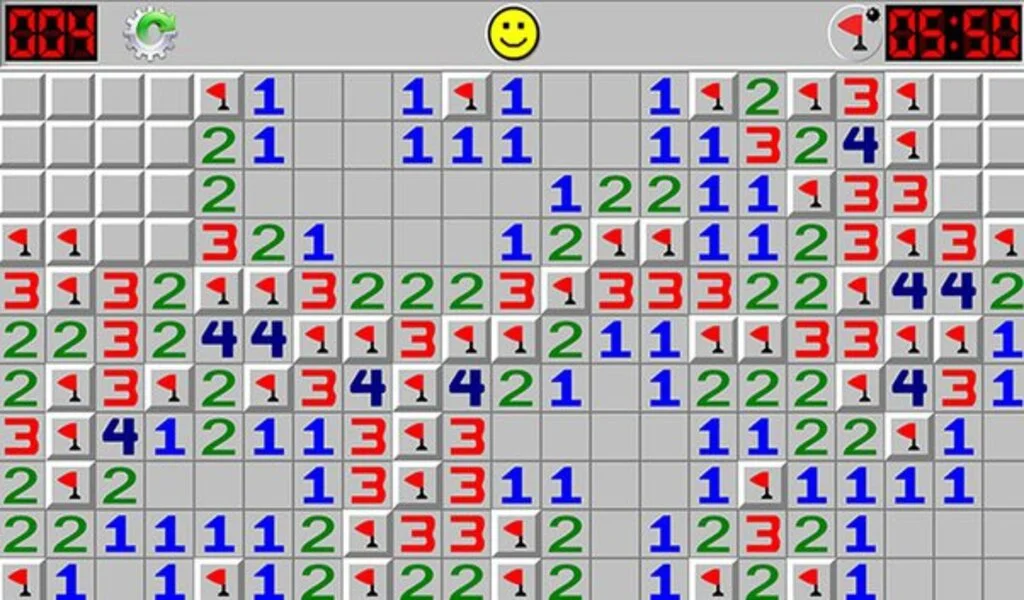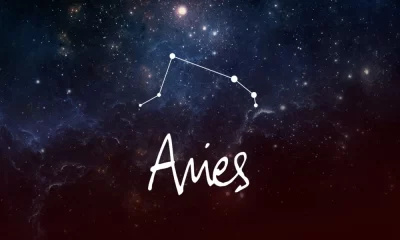Digital Gaming
Game Design Mastery: What Makes World of Warcraft Tick
World of Warcraft, since its release in 2004, has captivated millions of players worldwide. Its success is not a mere stroke of luck; it’s a testament to the meticulous game design choices made by Blizzard Entertainment. In this exploration of WoW’s game design mastery, we delve into the elements that have cemented its place as a titan in the MMORPG genre.
What Makes World of Warcraft Tick
Engaging Narrative: A World Alive with Stories
WoW sets itself apart with its rich, evolving narrative. Set in the expansive world of Azeroth, it offers a deep lore that has grown over years, with each expansion adding new layers to its story. This living narrative keeps players engaged, eager to discover the fate of their favorite characters and realms.
Interviews with lead designers reveal that Blizzard places a strong emphasis on story-driven content. Each quest, no matter how small, adds to the larger tapestry of Azeroth’s history. This attention to narrative detail creates a world that is not just a backdrop for gameplay, but a character in its own right.
Character Progression: Personal and Rewarding
A core aspect of WoW’s appeal is its character progression system. Players start as novices in a vast world, slowly gaining power and prestige. This journey is deeply personal and varied, with multiple races, classes, and specializations to choose from. The progression feels rewarding, as each level and new ability signifies growth and mastery.
Blizzard’s approach to progression has evolved, with more recent expansions focusing on making the journey more accessible to new players while retaining depth for veterans. Player feedback has been crucial in this evolution, ensuring that progression feels meaningful and engaging for all.
Gameplay Mechanics: A Balance of Simplicity and Depth
WoW’s gameplay mechanics strike a delicate balance between simplicity and depth. The game is easy enough for beginners to understand but offers layers of complexity for those who delve deeper. This is evident in its combat system, which combines straightforward basic attacks with a vast array of skills and spells that require strategic thinking and timing.
The game also excels in providing a variety of content: solo quests, group dungeons, player versus player combat, and large-scale raids. This diversity ensures that players of all preferences find something enjoyable, keeping the gameplay experience fresh and engaging.
Community and Social Interaction: The Heart of WoW
An often-overlooked aspect of WoW’s game design is its fostering of community and social interaction. Guilds, parties, and raids are not just about tackling challenges together; they build a sense of belonging and friendship. This social dimension adds a layer of enjoyment beyond the game’s mechanics.
Blizzard has continuously worked to improve social features, making it easier for players to connect, cooperate, and even compete. Player feedback has guided these improvements, emphasizing the importance of a strong, supportive community in the game’s lasting appeal.
Continuous Evolution: Adapting to Player Needs
One of WoW’s strengths is its ability to evolve. Blizzard has not shied away from making significant changes in response to player feedback and changing gaming landscapes. From revamping entire continents to rethinking character classes, these evolutions keep the game relevant and exciting.
Interviews with game designers reveal a commitment to this adaptability. They emphasize the importance of listening to the community and being willing to reinvent aspects of the game to maintain its appeal.
Majors changes in WoW history
Throughout its history, “World of Warcraft” (WoW) has undergone several major changes that have significantly shaped its gameplay, narrative, and player experience. These changes reflect Blizzard Entertainment’s commitment to evolving the game in response to technological advancements, player feedback, and the changing landscape of online gaming. Here are some of the most significant milestones in WoW’s history:
1. The Burning Crusade Expansion (2007)
- Introduction of New Races: The Blood Elves and Draenei were added, bringing new lore and racial abilities.
- Outland: A whole new world beyond Azeroth was introduced, expanding the game’s universe.
- Flying Mounts: Players could explore the world from the skies, a feature that drastically changed exploration and movement.
2. Wrath of the Lich King Expansion (2008)
- Northrend and the Lich King: A new continent and a compelling storyline centered around the iconic villain, the Lich King.
- Death Knight Class: WoW’s first hero class, which started at a higher level and had a unique storyline.
- Dungeon Finder Tool: A significant quality-of-life improvement that made it easier for players to find groups for dungeons.
3. Cataclysm Expansion (2010)
- Revamped Old World: A massive overhaul of Azeroth’s original continents, altering many zones and quests.
- Two New Races: Goblins and Worgen were added, each with unique starting experiences.
- Flying in Azeroth: Players could now use flying mounts in the original continents.
4. Mists of Pandaria Expansion (2012)
- Pandaren Race and Monk Class: Introduction of a new race and class, both with unique cultural and gameplay elements.
- Pet Battle System: A new mini-game that allowed players to capture, train, and battle with non-combat pets.
5. Warlords of Draenor Expansion (2014)
- Garrisons: Players could build and manage their own personal bases, which provided resources and benefits.
- Revamp of Character Models: Significant updates to the original races’ models, improving their detail and animations.
6. Legion Expansion (2016)
- Artifact Weapons: Powerful, class-specific weapons that players could level up and customize.
- Demon Hunter Class: A second hero class with unique mobility and combat mechanics.
- World Quests: A new system for endgame content that provided varied and dynamic objectives across the game world.
7. Battle for Azeroth Expansion (2018)
- Warfronts and Island Expeditions: New modes that focused on large-scale PvE battles and exploration.
- Azerite Armor: A new system for customizing gear with various powers and traits.
8. Shadowlands Expansion (2020)
- Level Squish: Reducing the level cap from 120 to 60 and revamping the leveling experience.
- New Realm: The Shadowlands: Introducing an afterlife-themed realm with new zones and covenants, each offering unique abilities and storylines.
- Torghast, Tower of the Damned: A roguelike dungeon experience with ever-changing challenges.
9. Dragonflight Expansion (2022)
- New Race/Class Combination: Dracthyr Evokers: Introducing a race that is also a class, with unique gameplay mechanics.
- Dragonriding: A new form of aerial movement, allowing more dynamic exploration.
- Talent System Overhaul: Revamping the talent system to provide more meaningful choices.
Each of these changes represents a significant evolution in WoW’s gameplay, storytelling, and community engagement. By continuously reinventing and expanding its world, WoW has managed to maintain a vibrant and active player base, remaining one of the most popular MMORPGs even after many years since its initial release.
Fastest Way To Level Up in WoW
Taking advantage of a WoW boost service, operated by professional gamers, is widely recognized as one of the fastest ways to level up in WoW. These services are run by highly skilled players who have mastered the intricacies and fastest routes through the game. By employing a boosting service, players can bypass the traditional grind of questing and dungeon runs, leapfrogging straight to higher levels at an unprecedented pace. The pros know the most efficient quests, the quickest dungeon routes, and the optimal strategies for gaining experience swiftly. Furthermore, these services often offer additional insights into game mechanics, providing an educational element to the boost. While this method is quite efficient, it’s important for players to ensure they’re using reputable and trusted services.
Verdict
The mastery of game design evident in World of Warcraft lies in its blend of engaging narrative, rewarding character progression, balanced gameplay mechanics, and a strong focus on community and adaptability. These elements work in harmony to create a game that is not just a pastime but a part of its players’ lives. As WoW continues to evolve, it stands as a benchmark in the MMORPG genre, a masterclass in game design that other titles aspire to emulate.
SEE ALSO: Quordle Today: Daily Quordle Word Puzzle Hints And Answer For December 27, 2023
Digital Gaming
The Hidden Depths of Minesweeper: Strategy, Skill, and Surprise

The classic game bundled with so many of our introduction computers, Minesweeper, is much more than just a timewaster. The Hidden Depths of Minesweeper: Strategy, Skill, and Surprise gives us an insight into the fascinating mix of luck, logic, and strategy that lies at its core.
Minesweeper strategy – Finding the right path to followIn this article, we dive past what it takes to follow a guide on learning how to play Minesweeper but discuss the cognitive benefits and strategic elements in one of those typical-looking grids of squares.
From those seeking to hone their hobby and improve mental acuity to anyone who wants an in-depth understanding of why Minesweeper continues as one of the most popular games online for nearly a generation, lessons and revelations abound.
Minesweeper, like the Rest of Us
To become a master of Minesweeper, it is essential to know the basic principles. This section will try to understand the basic gameplay a beginner needs and how well you can disregard other ideas while going in.
You will discover how to move across the interface, rules of play, and early game plans, respectively. This is foundational for anyone wanting to master Minesweeper and the base understanding necessary before we start exploring more advanced techniques or deeper strategic avenues.
A few sophisticated techniques and sprucing up the strategy
Once you have the fundamentals down, Minesweeper’s strategy is a matter of pattern recognition and anticipation. In the latter part of this article, we show some sophisticated tools and hone your probability even more!
It ranges from learning how to efficiently use tags for flagging mines over more advanced approaches, e.g., the ‘1-2 pattern’ to figure out which moves are safe – all intended to streamline your efforts and foster strategic thinking. These are the super-fundamentals that players need to get into to increase their play and tackle higher difficulty levels.
Cognitive Gains: Lessons We Can Learn From Minesweeper
Having fun and exercising the brain with Minesweeper In one such section, exploring the cognitive gains associated with playing Minesweeper regularly (i.e., improved problem-solving skills and memory; faster decision-making process).
It helps to develop a sense of spatial awareness and cognitive processing, which is lightning quick. We’ll also cover how these skills can be used in other realms, with our argument for why you might want to add Minesweeper into your weekly cognitive fitness.
Minesweeper in Contemporary Gaming Culture
However, it has survived gracefully as Minesweeper adapted to new platforms and technology. This part of Origin is a dive into how the game has transitioned from an idle desktop amusement pre-load to what you see on mobile and online.
We look closer at the devious changes it has been through and examine how digitization brought Minesweeper to new players today as one of the most well-known titles bundled with Windows. We will also explore the Minesweeper community, consisting of online forums, competitive play, and global leaderboards that keep it vibrant even today.
Conclusion
Minesweeper has shown to be a more complex and delightful game than is immediately apparent. It rewards players every step of the way, with everything from basic gameplay mechanics to complex strategies, cognitive benefits, and cultural significance.
Whether you are an old hand, a skilled player, or a newbie waiting to explore its essence, Minesweeper offers intense playtimes and furnishes strategic insights and brain-boosting skills. While we enjoy and explore this game, Minesweeper shows how well-designed puzzles (in any field) can still be fun after 30 years.
People Also Reading:
God of War: Ragnarok Ascends to PC This September – State of Play 2024
https://www.chiangraitimes.com/digital-gaming/god-of-war-ragnarok-comes-to-pc/
Digital Gaming
The hidden depths of Minesweeper: strategy, skill, and surprise

The classic game bundled with so many of our introduction computers, Minesweeper, is much more than just a timewaster. The Hidden Depths of Minesweeper: Strategy, Skill, and Surprise gives us an insight into the fascinating mix of luck, logic, and strategy that lies at its core. Minesweeper strategy – Finding the right path to followIn this article, we dive past what it takes to follow a guide on learning how to play Minesweeper but discuss the cognitive benefits and strategic elements in one of those typical-looking grids of squares. From those seeking to hone their hobby and improve mental acuity to anyone who wants an in-depth understanding of why Minesweeper continues as one of the most popular games online for nearly a generation, lessons and revelations abound.
Minesweeper, like the Rest of Us
To become a master of Minesweeper, it is essential to know the basic principles. This section will try to understand the basic gameplay a beginner needs and how well you can disregard other ideas while going in. You will discover how to move across the interface, rules of play, and early game plans, respectively. This is foundational for anyone wanting to master Minesweeper and the base understanding necessary before we start exploring more advanced techniques or deeper strategic avenues.
A few sophisticated techniques and sprucing up the strategy
Once you have the fundamentals down, Minesweeper’s strategy is a matter of pattern recognition and anticipation. In the latter part of this article, we show some sophisticated tools and hone your probability even more! It ranges from learning how to efficiently use tags for flagging mines over more advanced approaches, e.g., the ‘1-2 pattern’ to figure out which moves are safe – all intended to streamline your efforts and foster strategic thinking. These are the super-fundamentals that players need to get into to increase their play and tackle higher difficulty levels.
Cognitive Gains: Lessons We Can Learn From Minesweeper
Having fun and exercising the brain with Minesweeper In one such section, exploring the cognitive gains associated with playing Minesweeper regularly (i.e., improved problem-solving skills and memory; faster decision-making process). It helps to develop a sense of spatial awareness and cognitive processing, which is lightning quick. We’ll also cover how these skills can be used in other realms, with our argument for why you might want to add Minesweeper into your weekly cognitive fitness.
Minesweeper in Contemporary Gaming Culture
However, it has survived gracefully as Minesweeper adapted to new platforms and technology. This part of Origin is a dive into how the game has transitioned from an idle desktop amusement pre-load to what you see on mobile and online. We look closer at the devious changes it has been through and examine how digitization brought Minesweeper to new players today as one of the most well-known titles bundled with Windows. We will also explore the Minesweeper community, consisting of online forums, competitive play, and global leaderboards that keep it vibrant even today.
Conclusion
Minesweeper has shown to be a more complex and delightful game than is immediately apparent. It rewards players every step of the way, with everything from basic gameplay mechanics to complex strategies, cognitive benefits, and cultural significance. Whether you are an old hand, a skilled player, or a newbie waiting to explore its essence, Minesweeper offers intense playtimes and furnishes strategic insights and brain-boosting skills. While we enjoy and explore this game, Minesweeper shows how well-designed puzzles (in any field) can still be fun after 30 years.
SEE ALSO: Astro Bot Returns On PlayStation 5 in 2024 – State of Play 2024
Digital Gaming
Canuckle: The Canadian Twist on the Wordle Phenomenon

In the ever-evolving world of online gaming, one word game has captured the attention of millions worldwide – Wordle.
Launched in October 2021, Wordle quickly became a global phenomenon, with players eagerly anticipating the daily challenge of guessing a five-letter word. However, for Canadian enthusiasts, a new and exciting version of this game has emerged – Canuckle.
Canuckle is a Canadian-themed spin-off of the original Wordle, created by an Ottawa resident, Mark Rogers, in February 2022.
This game has quickly gained popularity among Canadians, offering a unique and engaging way to showcase the country’s culture, language, and identity through the medium of a word game.
What is Canuckle?
Canuckle is a daily online word game that follows the same basic premise as Wordle, but with a distinctly Canadian twist. Players have six attempts to guess a five-letter word, and the game provides feedback on the correct letters and their positions, just like in Wordle.
However, the key difference is that the words used in Canuckle are specifically related to Canadian culture, geography, or language.
The game’s creator, Mark Rogers, was inspired to develop Canuckle after his children struggled with some of the more obscure words in the original Wordle.
“My kids had been doing some of the Wordle puzzles and there were some tricky words like ‘knoll’ and ‘proxy’ and they didn’t know what those were,” Rogers explains. “So I thought it would be fun to have some words that were a little more common, but tied to Canada.”
Canuckle Rules and Gameplay
The rules of Canuckle are straightforward and similar to Wordle. Players have six attempts to guess a five-letter word, and the game provides feedback on the correct letters and their positions.
If a letter is in the correct spot, it will be highlighted in green; if the letter is in the word but in the wrong position, it will be yellow; and if the letter is not in the word at all, it will be gray.
To start a new game, players simply visit the Canuckle website (https://canucklewordgame.ca) and click the “New Game” button. The game will then randomly select a five-letter Canadian-themed word for the player to guess.
One of the unique aspects of Canuckle is the variety of words used in the game. The words can range from Canadian geographical locations (like “Yukon” or “Moose Jaw”), to Canadian slang and idioms (such as “hoser” or “eh”), to iconic Canadian symbols and cultural references (like “maple” or “loon”).
Canuckle Tips and Strategies
While Canuckle shares many similarities with Wordle, there are some unique strategies and tips that can help players improve their performance:
- Start with Common Canadian Words: Begin your guesses with words that are commonly used in Canada, such as “hockey,” “maple,” or “beaver.” These words are more likely to be included in the daily Canuckle puzzle.
- Use the Feedback: Pay close attention to the feedback provided after each guess, as it can help you narrow down the correct word. Focus on the letters that are highlighted in green or yellow, as they will give you valuable clues about the word.
- Keep Track of Previous Guesses: Maintaining a record of your previous guesses can help you avoid repeating words and wasting valuable attempts.
- Embrace Canadian Slang and Idioms**: Don’t be afraid to try guessing words that are uniquely Canadian, such as “hoser,” “toque,” or “eh.” These types of words are often featured in the Canuckle puzzles.
- Use Word Associations: When trying to guess the correct word, think about other words or phrases that are associated with Canadian culture or geography. This can help you come up with creative and relevant guesses.
- Don’t Overthink It: Sometimes the correct word can be a simple and straightforward Canadian term. Avoid overcomplicating your guesses, as this can lead you further away from the solution.
The Popularity of Canuckle
Since its launch in February 2022, Canuckle has quickly gained a dedicated following among Canadian Wordle enthusiasts. The game has been praised for its unique and engaging approach to showcasing Canadian culture and language, and it has even attracted the attention of national media outlets.
According to the game’s creator, Mark Rogers, Canuckle has seen a remarkable surge in popularity, with over 2.4 million players as of early 2023.
The game’s success has been particularly notable on social media, where Canadians have enthusiastically shared their Canuckle experiences and achievements.
One of the game’s avid players, Brenda Neale, Rogers’ aunt, expressed her fondness for Canuckle, saying, “I love the game because it’s Canadian is the main thing. I just like the fact that you have to think of Canadian things.
And he’s had some great words that are Canadian – sorry, loons, syrup, maple.”
The game’s popularity has also led to the creation of a dedicated community of Canuckle players, who share tips, strategies, and discussions on various online platforms.
This sense of community and shared experience has been a significant factor in the game’s success, as it has fostered a sense of national pride and camaraderie among Canadian players.
The Future of Canuckle
As Canuckle continues to gain popularity, the game’s creator, Mark Rogers, has revealed plans to keep the game fresh and engaging for its growing player base.
One notable decision is to end the game’s daily challenges on Canada Day, July 1st, 2024, with the final word being a special Canadian-themed surprise.
“We actually decided we wanted to get all the way to Canada Day,” Rogers explains. “So the last word is going to be on July 1. So, we’ve got a good number of words in store all the way to July 1.”
This strategic move not only adds to the game’s uniqueness but also aligns with the Canadian theme, making the final challenge a fitting celebration of the country’s national holiday.
Despite the game’s finite lifespan, Canuckle’s impact on the Canadian gaming community is likely to be long-lasting.
The game has not only provided a fun and engaging way for Canadians to connect with their national identity but has also highlighted the growing demand for culturally-specific digital experiences.
As the world continues to embrace the Wordle phenomenon, Canuckle stands as a testament to the power of adapting popular gaming concepts to reflect the unique cultural and linguistic nuances of a particular region or country.
In the case of Canuckle, it has become a beloved and quintessentially Canadian addition to the ever-evolving world of online word games.
-

 News3 years ago
News3 years agoLet’s Know About Ultra High Net Worth Individual
-
Entertainment1 year ago
Mabelle Prior: The Voice of Hope, Resilience, and Diversity Inspiring Generations
-

 Health3 years ago
Health3 years agoHow Much Ivermectin Should You Take?
-

 Tech1 year ago
Tech1 year agoTop Forex Brokers of 2023: Reviews and Analysis for Successful Trading
-

 Lifestyles2 years ago
Lifestyles2 years agoAries Soulmate Signs
-

 Health2 years ago
Health2 years agoCan I Buy Ivermectin Without A Prescription in the USA?
-

 Movies2 years ago
Movies2 years agoWhat Should I Do If Disney Plus Keeps Logging Me Out of TV?
-

 Learning2 years ago
Learning2 years agoVirtual Numbers: What Are They For?
